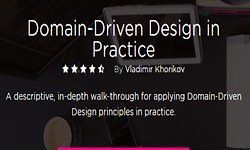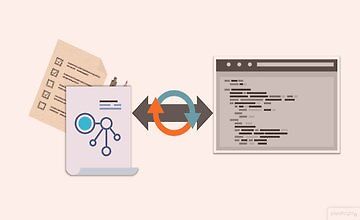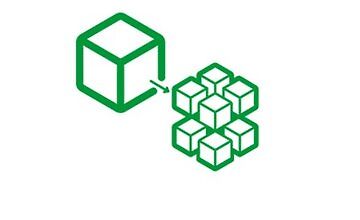-
Урок 1.
00:00:24
Introduction
-
Урок 2.
00:01:01
10 Years of Domain-Driven Design
-
Урок 3.
00:01:28
What's in This Course?
-
Урок 4.
00:00:31
Eric Evans' Participation in This Course
-
Урок 5.
00:02:14
Why Should You Care About Domain-Driven Design?
-
Урок 6.
00:01:13
High Level View of DDD 1: Interaction With Domain Experts
-
Урок 7.
00:00:25
Eric Evans on the Importance of Communication
-
Урок 8.
00:01:16
High Level View of DDD 2: Focus on a SubDomain
-
Урок 9.
00:00:51
High Level View of DDD 3: Implementing the SubDomain
-
Урок 10.
00:01:48
Benefits of DDD
-
Урок 11.
00:02:09
Drawbacks of DDD
-
Урок 12.
00:02:33
A Mind Map of DDD's Working Parts
-
Урок 13.
00:06:27
Overview of the App Used in This Course
-
Урок 14.
00:01:22
Key Takeaways
-
Урок 15.
00:00:45
Resources
-
Урок 16.
00:00:28
Introduction
-
Урок 17.
00:00:52
Goals?
-
Урок 18.
00:05:15
Learning About Our Domain by Talking With a Domain Expert
-
Урок 19.
00:00:51
Breaking the Domain Into Sub-domains
-
Урок 20.
00:05:24
Focusing on One Sub-domain With the Domain Expert
-
Урок 21.
00:01:07
First High-level Model of the Sub-domain
-
Урок 22.
00:04:46
Creating a Bounded Context
-
Урок 23.
00:02:31
Difference Between Sub-domain and Bounded Context
-
Урок 24.
00:05:00
Understanding Context Maps
-
Урок 25.
00:01:31
Eric Evans on Clearly Defining Context Boundaries
-
Урок 26.
00:01:27
Bounded Contexts in Our Application
-
Урок 27.
00:03:47
The Ubiquitous Language of a Bounded Context
-
Урок 28.
00:05:24
Working on a Ubiquitous Language With the Domain Expert
-
Урок 29.
00:05:22
Glossary of Terms From This Module
-
Урок 30.
00:00:57
A Quick Review
-
Урок 31.
00:00:32
Resources
-
Урок 32.
00:00:24
Introduction
-
Урок 33.
00:01:13
Goals
-
Урок 34.
00:02:09
The Importance of Understanding DDD Terminology
-
Урок 35.
00:02:54
Focus on the Domain
-
Урок 36.
00:02:11
Anemic and Rich Models
-
Урок 37.
00:09:14
Entities in DDD and in Our Bounded Context
-
Урок 38.
00:05:52
Eric Evans on the Single Responsibility of Entities
-
Урок 39.
00:01:56
Eric Evans on the Entity Equality Methods
-
Урок 40.
00:07:39
How We've Implemented Entities in Our Code
-
Урок 41.
00:04:17
Associations (aka Relationships)
-
Урок 42.
00:06:55
Value Objects
-
Урок 43.
00:02:55
Eric Evans on the Methods in Value Objects
-
Урок 44.
00:04:18
Value Objects in Our Code
-
Урок 45.
00:01:16
Eric Evans on the Entity Logic in Value Objects
-
Урок 46.
00:03:16
Domain Services
-
Урок 47.
00:02:41
Glossary
-
Урок 48.
00:00:53
Key Takeaways
-
Урок 49.
00:01:11
Resources
-
Урок 50.
00:00:20
Introduction
-
Урок 51.
00:00:46
Goals
-
Урок 52.
00:01:41
Tackling Data Complexity
-
Урок 53.
00:03:11
Introducing Aggregates and Aggregate Roots
-
Урок 54.
00:02:17
Interacting With Aggregates
-
Урок 55.
00:01:53
Evolving the Appointments Aggregate
-
Урок 56.
00:02:26
Using Invariants to Better Understand Our Aggregate
-
Урок 57.
00:01:00
Modeling Breakthroughs and Refactoring
-
Урок 58.
00:01:42
Considering Schedule as Our New Aggregate
-
Урок 59.
00:06:14
The Schedule Aggregate in Our Application
-
Урок 60.
00:01:24
Review Aggregate Tips
-
Урок 61.
00:01:18
Glossary
-
Урок 62.
00:00:38
Resources
-
Урок 63.
00:00:15
Introduction
-
Урок 64.
00:00:27
Goals
-
Урок 65.
00:03:45
Introducing Repositories
-
Урок 66.
00:06:46
Repository Tips, Benefits, and Guidance
-
Урок 67.
00:01:04
Comparing Repositories and Factories
-
Урок 68.
00:01:04
To IRepository T or Not to IRepository T?
-
Урок 69.
00:01:44
Generic Repositories in DDD
-
Урок 70.
00:05:11
Repositories in Our Application
-
Урок 71.
00:05:34
Refactoring for Better Separation
-
Урок 72.
00:01:44
Glossary
-
Урок 73.
00:00:22
References
-
Урок 74.
00:00:19
Introduction
-
Урок 75.
00:00:25
Goals
-
Урок 76.
00:06:23
Introducing Domain Events
-
Урок 77.
00:10:45
Domain Events Demo in a Simple App
-
Урок 78.
00:09:39
Domain Events in Our Application
-
Урок 79.
00:02:18
Domain Event Boundaries
-
Урок 80.
00:03:45
Anti-corruption Layers
-
Урок 81.
00:01:48
Glossary
-
Урок 82.
00:00:34
References
-
Урок 83.
00:00:19
Introduction
-
Урок 84.
00:00:34
Goals
-
Урок 85.
00:01:16
Our Current System Design
-
Урок 86.
00:01:57
Discussing a New Feature With the Domain Expert
-
Урок 87.
00:01:23
Planning the Implementation
-
Урок 88.
00:05:46
Adding a Message Queue Between Our Apps
-
Урок 89.
00:05:38
Combining Message Queues, Events, and Services
-
Урок 90.
00:10:54
Debugging to See Detailed Implementation in Code
-
Урок 91.
00:00:51
Homework: Extending the App Again
-
Урок 92.
00:02:55
Considering the UI When Designing the Domain
-
Урок 93.
00:02:35
Eric Evans on the Fallacy of Perfectionism
-
Урок 94.
00:00:41
Remember This From This Module!
-
Урок 95.
00:01:09
Glossary
-
Урок 96.
00:01:40
References







